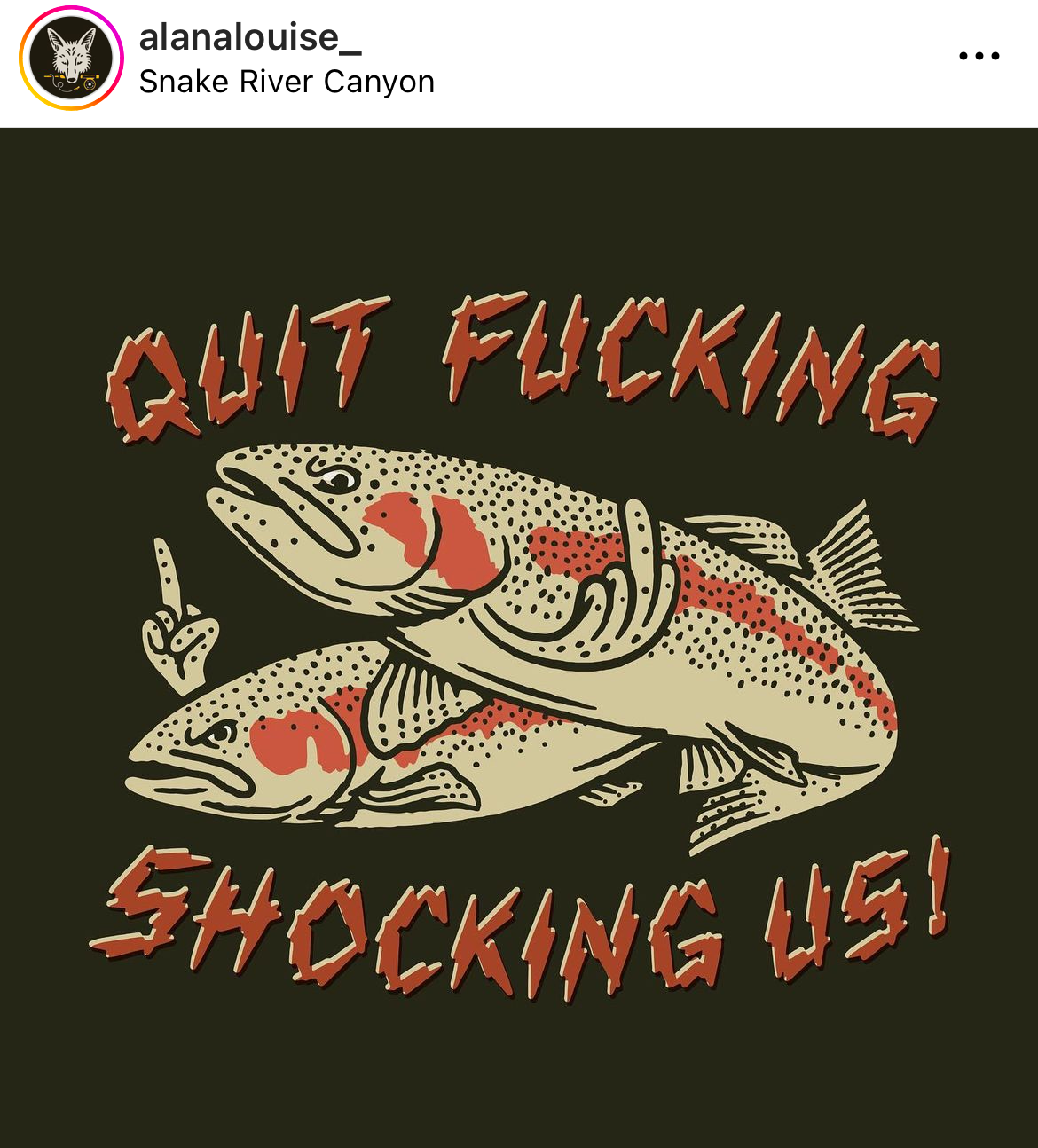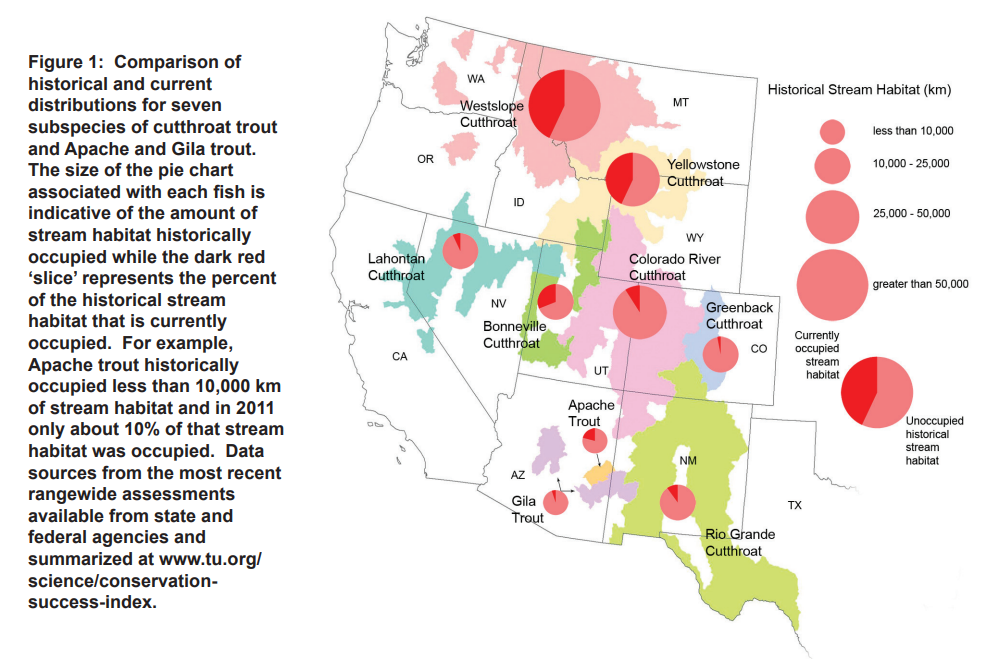The Cult of the Rainbow
We simply don't need more rainbow trout, and rest assured, they aren't going anywhere. So don't be swayed by the cult of rainbow trout.

November 2022
We're overrun with rainbow trout. They are seemingly everywhere cold water flows. We propagate them in hatcheries, distribute them to local lakes and streams, even unleash them to urban ponds for fishing derbies where they stand no chance of surviving a full year. They've made a global journey by our side, and are now found on every habitable continent. Rainbows are truly one of the most prolific GMOs humans have concocted. We've bred them into unique strains so they are suited to our every need. Need them to grow large quickly? We've got a strain for that. Need them to be more resistant to whirling disease? We've got a strain for that. I'd consider them man's (aquatic) best friend, and we've detailed their rise in this past article. However, their proliferation has come with a cost. They outcompete native trout when living side-by-side, and rapidly climbed the ranks of the world's most invasive species, currently ranked at #63. If you rank only fish, they are #6.
Despite their prominence, there are certain rivers where rainbow trout aren't seen so favorably. Deep in the Rocky Mountains, nestled on the Idaho/Wyoming border, the South Fork of the Snake River travels west below Palisades Reservoir, harboring one of the last strongholds for Yellowstone and Snake River cutthroat trout. Considered a dry fly paradise, cutthroats dominate this river and anglers hold this river in the upper echelon of western fisheries. But the aggressive, efficient rainbow trout has developed a rising population within these waters and increasingly threaten the famous cutthroat stronghold.
This is where we encounter the cult of the rainbow trout; it has a far-reach of those who cannot or simply won't appreciate how unique and fragile cutthroat trout are in our modern world. Part of the reason that rainbow trout are so invasive in cold water ecosystems is because they can tolerate a wider range of environmental conditions better than cutthroat trout. As temperatures warm, the impact on cutthroat are more immediate than on rainbow trout. Of course this is well-documented and well-known. Nevertheless, those infatuated with rainbow trout don't seem concerned about the ecological devastation left in their broadening wake. When I recently uncovered this symbolic relic left behind by the cult of rainbow trout, a piece of propaganda posted on Instagram, apparently conceived by high priest Jimmy Kimmel (known fly angler) and Alana Louise, I got a little mad. "Quit fucking shocking us" it reads; referring to the electrofishing efforts taken by local agencies to physically remove invasive rainbow trout from the South Fork of the Snake, in an effort to buoy the populations of native cutthroats.

Clearly, the state's work to remove rainbow trout from the South Fork has rubbed some the wrong way. Based on this image and it's implied message, these "cultists" don't understand why removing rainbow trout from the river is considered necessary. Plus, these people fail to grasp how unique and endangered cutthroat trout really are... there's no way around it, Jimmy Kimmel, Alana Louise, this is a BAD TAKE. No one is taking away the rainbow trout, feel free to stop at any local pond, Hell, just follow the hatchery truck around and sooner or later you'll stumble upon a plethora of rainbow trout. But places with cutthroat trout should be held in a higher regard. These natives are essentially glacial relics, living now in the twilight of their empire. Unfortunately, this means undoing past introductions and removing rainbows where they're not really needed, or wanted. I for one don't need another stream or lake full of rainbows. Believe it or not, our supply of rainbow trout is not in jeopardy. Cutthroat on the other hand, only occupy a fraction of their historic range.


So, if anyone out there knows Jimmy, lets educate him about the facts:
- Rainbow trout hybridize with native cutthroat trout and degrade the genetic integrity of unique populations of cutthroat trout
- Rainbow trout outcompete cutthroat trout when found in the same habitat
- Rainbow trout raised in hatcheries can expose wild cutthroat trout to new diseases
- Rainbow trout's aggressive behavior can displace cutthroat trout to suboptimal habitat patches
- Rainbow trout migrate and invade habitat once unique to cutthroat trout
We simply don't need more rainbow trout, and rest assured, they aren't going anywhere. So don't be swayed by the cult of rainbow trout. They eat flies, swim hard, and jump high, but each is a common trick that can be found all over the world. Annually, Colorado's hatchery program alone produces 2.5 million catchable (10") rainbow trout for distribution.
As far as the cutthroat of the world, they're going to need all the help we can give them. If that means electroshocking some rainbows out of existence on the South Fork, so be it. We can start by fortifying cutthroat's native range from the ever growing masses of rainbows and their cultists chanting: invadere mundum: invade the world.


